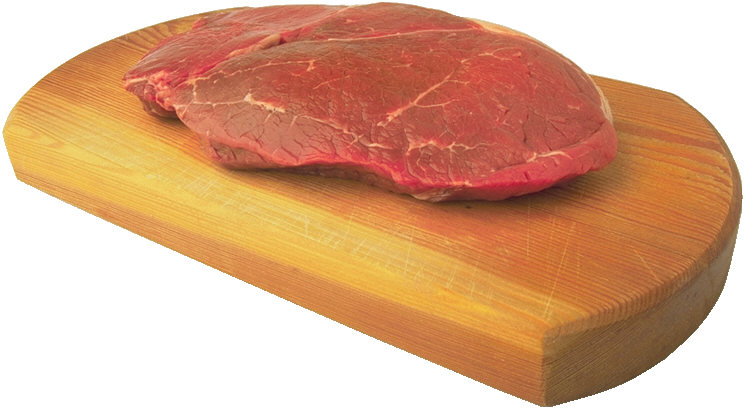
 | ||||||

 | ||||||

Recommended For Grilling
T-Bone Steak
Flank Steak
Chuck Arm Roast
Rib Eye Steak
Rib Roast Small End
Sirloin Steak, Boneless
Sirloin Steak Round Bones
Sirloin Steak, Wedge Bone
Top Loin Steak
Boneless top Loin Steak
Porterhouse Steak
Eye Round Steak
Sirloin Steak Pin Bone
Rib Steak Large & Small End
Sirloin Steak Flat Bones
Recommended For Stir-Fry
T-Bone Steak
Flank Steak
Recommended For Pan-Fry
Top Loin Steak
Chuck Arm Roast
Rib Eye Steak
Rib Steak Large & Small End
Sirloin Steak, Boneless
Sirloin Steak, Wedge Bone
Sirloin Steak Flat Bones
Sirloin Steak Round Bones
T-Bone Steak
Boneless top Loin Steak
Sirloin Steak Pin Bone
Porterhouse Steak
Tip Seak
Eye Round Steak
Top Round Steak
Recommended For Roasting
Tip Roast
Cross Rib Pot Roast
Chuck Blade Roast or Pot Roast
Chuck Blade Steak
Beef Rib Roast Roll
Rib Roast Small End
Boneless Rump Roast
Recommended For Braising
Shank Cross Cut
Cross Rib Pot Roast
Chuck Arm Steak
Chuck Blade Steak
Chuck Arm Roast
Chuck Blade Roast
Beef Rib Roast Roll
Brisket Whole
Short Ribs
Flank Steak
Round Steak
Boneless Rump Roast
Bottom Round Steak
Eye Round Steak
Heel of Round
Recommended For Broiling
T-Bone Steak
Flank Steak
Chuck Arm Roast
Chuck Blade Steak
Rib Steak Large & Small End
Rib Eye Steak
Sirloin Steak, Boneless
Sirloin Steak, Wedge Bone
Sirloin Steak Round Bones
Tip Steak
Sirloin Steak Pin Bone
Porterhouse Steak
Top Loin Steak
Sirloin Steak Flat Bones
Recommended For Pan-Broil
Top Loin Steak
Chuck Arm Roast
Rib Eye Steak
Rib Steak Large & Small End
Sirloin Steak, Boneless
Sirloin Steak, Wedge Bone
Sirloin Steak Flat Bones
Sirloin Steak Pin Bone
Sirloin Steak Round Bones
Porterhouse Steak
Boneless top Loin Steak
Boneless top Loin Steak
Tip Steak
Eye Round Steak
Top Round Steak
Please visit our Beef Recipes Section
Most Tender Cuts:
Fillet Mignon
New York Strip Steak or Porterhouse Steak
T-Bone Steak
Rump Roast, Boneless
Most Flavorful Cuts:
Rib Eye Steak or Delmonico Steak
Prime Rib Roast
The Toughest Cuts:
Flank Steaks (stir fry), Chuck Steaks and any Sirloin Steak that is not specifically marked "Top Sirloin"
Round Cuts:
Loin Cuts:
Rib Cuts:
Chuck Cuts:
Flank & Plate Cuts:
Brisket & Foreshank Cuts:
MyLatinDelights.com
How to Select the Perfect Beef Cut for Your Dish
Beef is the layman’s term for meat produced by bovines. Cattle, bison, yak, ox, Zebu, water buffalo and antelopes are some of the animals that are included in the bovine family.
Beef is divided into six primal cuts:
1. Round
Round
2. Loin
Loin
3. Chuck
Chuck
4. Rib
Rib
5. Flank & Plate
Flank & Plate
6. Brisket & Foreshank
Brisket & Foreshank
Round Steak: This steak is identified by the round leg bone and three muscles.
Rump Roast, Boneless: When the rump or bone is removed, then rolled and tied, to form a log-like shape.
Top Round Steak: The Top Round Steak is the tenderest of the round steaks. This boneless steak consists of a large muscle called the top or inside round.
Bottom Round Steak: The Beef Bottom Round Steak contains muscles which are less tender than the top round muscle. The two muscles of this steak are the eye of the round on the left and the bottom round on the right.
Eye Round Steak: The Beef Round Eye Round Steak is a small round boneless steak. It usually has a layer of external fat on two sides.
Tip Roast: The Beef Round Tip Roast is a rolled and tied roast that is identified by four individual muscles within one large muscle mass.
Tip Steak: The Tip Steak is cut from the tip roast. Like the roast this steak is identified by four individual muscles within on large muscle mass.
Heel of Round: The Heel of Round represents a cut from the beef round immediately above the hock. This roast is composed of many small muscle groups, has a lot of seam fat, and is one of the least tender cuts of beef.
Top Lion Steak: The Beef Loin Top Loin Steak is the first type of steak cut from the beef loin. It is cut from the end of the beef loin which contains the last or 13th rib. This steak is identified by the large eye muscle, the rib bone, and part of the backbone.
T-Bone: This steak has the characteristic of a "T" bone encrusted within the steak.
Top Loin Steak, Boneless: The boneless large eye muscle from the T-bone steak is called the Beef Loin Top Loin Steak, Boneless.
Porterhouse Steak: The Porterhouse Steak is similar to the beef loin T-bone steak. However the tenderloin muscle is much larger and an extra muscle is located in the center of the porterhouse steak on the upper side.
Tenderloin Steak: It is the tenderest cut from the entire beef cut. This steak has a fine texture, is circular in shape and is usually about three inches in diameter.
Sirloin Steak, Pin Bone: The Beef Loin Sirloin Steak, Pin Bone is the first cut from the sirloin area of the beef loin. This steak looks much like the beef loin T-bone and porterhouse steaks in that it contains the T-bone the large eye muscle and the tenderloin muscle. However, it also contains an oval-shaped bone which you can see in the upper left corner of the steak. This bone is called the pin bone and is the tip portion of the hip bone.
Sirloin Steak, Flat Bone: The Beef Loin Sirloin Steak, Flat Bone is the least valuable type of sirloin steak if both the flat hip and backbones are left in the steak.
Sirloin Steak, Round Bone: The Sirloin Steak, Round Bone is located further back on the sirloin area of the beef loin. This particular sirloin steak has the greatest amount of lean and the least amount of bone.
Sirloin Steak Wedge Bone: it’s a sirloin steak with a wedge bone
Sirloin Steak, Boneless: The Beef Loin Sirloin Steak, Boneless is an excellent steak for broiling and is made by removing all of the bones from any of the other types of sirloin steaks.
Rib Roast Small End: The Beef Rib Roast, Small End, contains several ribs, a portion of the backbone and one large muscle, the rib eye.
Rib Roast Roll: The bones of the beef rib roast are sometimes removed. Then, rolled and tied with a string. When this is done the cut is known as a Beef Rib Roast, Boneless.
Rib Steak Small End & Rib Eye Steak: Both steaks contain a rib and portion of the backbone. Steaks from the small end of the beef rib, contains only the large rib eye muscle while steaks from the large end also contains one or more smaller muscles.
Blade Pot Roast: This large roast contains many small muscles and is easily identified by the blade bone located in the upper center of this cut. This bone may be removed to make this cut boneless.
Blade Steak:
The Beef Chuck Blade Steak is similar to the beef chuck blade roast. It is usually cut less than one inch thick.
Arm Steak: The Beef Chuck Arm Roast is identified by its thickness as a roast, the large round bone in the center of the cut and the many small muscles of which it is made. This roast may or may not have a cross cut rib bones.
Cross Rib Pot Roast: The Chuck Arm Steak is similar to the Chuck Arm Roast, thickness is the only difference. This steak will usually not have any rib.
Flank Steak: The Beef Flank Steak is the only steak, containing an entire large muscle. Also, although most other steaks are cut across the muscle fibers, the flank steak fibers run the full length of the steak. To help tenderize these long fibers, use a knife to score across the cut. Since the flank steak is one of the less tender steaks, it should be braised slowly cooked.
Shank Cross Cut: The Beef Shank Cross Cut is identified by a cross section of the arm bone and many very small muscles, each surrounded by connective tissue. Braising or cooking in liquid is recommended.
Brisket Whole: The Beef Brisket has a heavy layer of fat. Due to the texture of its muscle, cooking in liquid is recommended (e.g., braising).
Short Ribs: Short Ribs are small cubes containing a section of the rib bone and thin layers of muscles. They are not very tender. Therefore, braising or cooking in liquid is recommended.